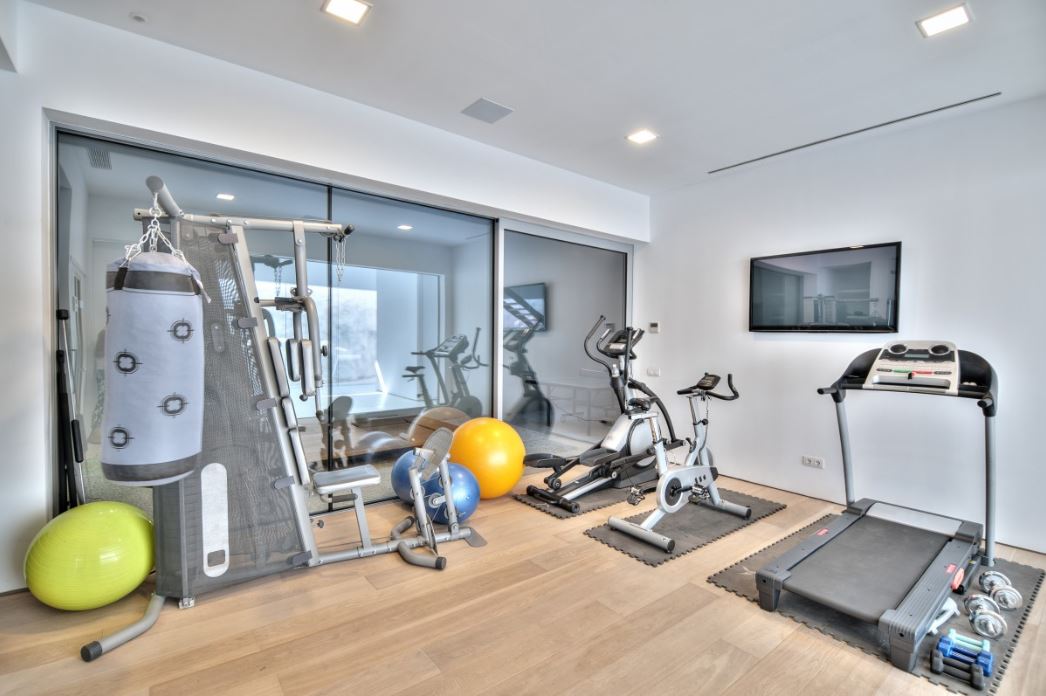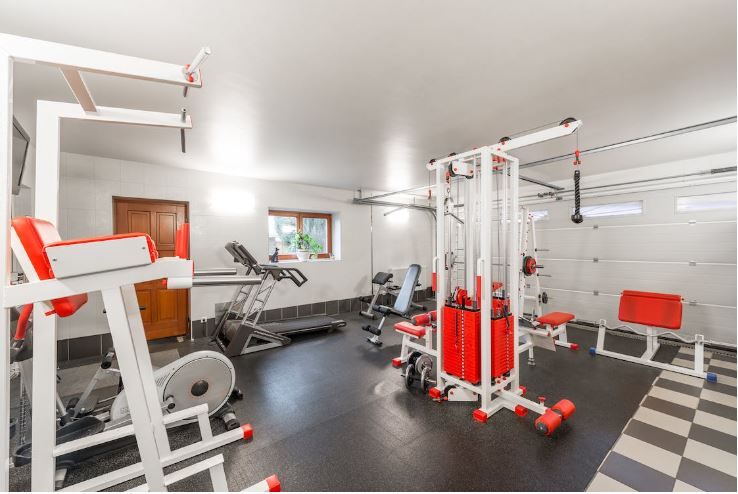Are you tired of paying for expensive gym memberships or dealing with the crowds at your local gym? With a few simple renovations and the right equipment, you can transform your basement into a high-performance home gym that meets all of your fitness needs. All of the first create a basement. If you have, then carried on to read home gym basement ideas.

Planning Your Basement Gym
Before you begin any renovations, it’s important to plan out your space and determine what type of equipment you’ll need. Consider factors such as the size of your basement, the types of exercises you want to do, and your budget.
Measure Your Space
Measure the basement space by measuring the length, width, and height of your basement to determine the amount of space you have to work with. Consider any structural elements, such as support beams, that may limit the placement of certain pieces of equipment. It’s important to have a clear picture of the available space so that you can make the most of it.
For example, if you have a small basement, you may need to opt for smaller, more compact equipment. Alternatively, if you have a large basement, you may be able to invest in larger, more heavy-duty equipment.
Determine Your Equipment Needs
Based on the types of exercises you want to do, research the different types of equipment that will best suit your needs. If you’re focused on weightlifting, for example, you’ll need a power rack, barbells, and weight plates.
If you’re more interested in cardio, you may want to invest in a treadmill or exercise bike. You may also want to consider additional equipment such as a yoga mat, resistance bands, and a jump rope. These accessories can add variety to your workout and help target different muscle groups.
Set Your Budget
Determine how much you’re willing to spend on equipment, renovations, and any other expenses associated with creating your home gym. Keep in mind that high-quality equipment can be costly, but it will last longer and provide better results. It’s important to set a budget and stick to it so that you don’t end up overspending.
One way to save money is by purchasing used equipment, as long as it is in good working condition. Additionally, you can purchase equipment in pieces, rather than all at once, so that you can spread the costs out over time.
Renovating Your Basement

Once you’ve planned out your space and determined what equipment you’ll need, it’s time to start renovating.
Flooring
The type of flooring you choose for your basement gym will depend on your budget and the types of exercises you plan to do. Rubber gym flooring is a popular option because it’s durable and provides a non-slip surface for weightlifting. However, it can be expensive. Another budget-friendly option is interlocking foam tiles.
These tiles are inexpensive and easy to install, and they provide a cushioned surface for exercises such as cardio. Another option is to install synthetic turf. This type of flooring is ideal for functional training, as it provides a good grip and is easy to clean.
Lighting
Basements can be dim and dingy, so it’s important to add plenty of lighting to your gym. Consider installing overhead lights, as well as task lighting for specific areas, such as your weightlifting area. Good lighting will not only make your gym a more pleasant place to be, but it will also make it safer to use. It’s important to have good visibility when using equipment so that you can avoid accidents.
Ventilation
Proper ventilation is important for any home gym to prevent the buildup of moisture and odors.
Consider installing a ventilation fan to remove stale air and bring in the fresh air. Additionally, you may want to consider installing a dehumidifier to remove excess moisture from the air. This is particularly important if you live in a damp climate or if your basement is prone to flooding. Proper ventilation and moisture control are crucial in maintaining a healthy and pleasant environment in your basement gym. It helps to prevent mold growth and musty odors, making it a comfortable place to work out.
Equipping Your Basement Gym
Now that your basement is renovated and ready, it’s time to start equipping it with the right equipment.
Weightlifting Equipment
For weightlifting, you’ll need a power rack, barbells, and weight plates. A power rack is a versatile piece of equipment that allows you to perform a wide range of exercises, including squats, deadlifts, and bench presses. It also provides safety features such as spotter bars, which can help to prevent accidents.
Barbells and weight plates are also essential for weightlifting. They come in a variety of weights, so you can start with lighter weights and gradually increase the weight as you build strength. Other popular equipment includes a bench press, squat rack, and dumbbells. Dumbbells are a great alternative to barbells, as they allow for a greater range of motion and can target different muscle groups.
Cardio Equipment
For cardio, you can choose from a variety of options, such as treadmills, stationary bikes, and ellipticals. Consider your fitness goals and budget when making your selection. Treadmills are a popular choice for running and walking, while exercise bikes are great for low-impact cardio.
Ellipticals are a good all-around option that provides a full-body workout. Another great option is a rowing machine, it’s an excellent low-impact cardio option that provides a full-body workout.
Accessories

In addition to the major workout equipment, you’ll also want to invest in accessories such as a jump rope, resistance bands, a punching bag, and a yoga mat. These accessories are relatively inexpensive and can add variety to your workout and help target different muscle groups. For example, a jump rope can be used for cardio and coordination, while resistance bands can be used for strength training and flexibility. A yoga mat is a must-have, it’s a great tool for stretching, yoga, and other floor exercises.
Organizing Your Basement Gym
Once your home gym equipment is in place, it’s important to organize your space to make the most of it. Use storage racks and shelving to keep your equipment organized and within easy reach. This will not only make your gym more efficient, but it will also help to prevent accidents and injuries. For example, keeping your free weights and other equipment in an organized manner will help to prevent tripping hazards.
Additionally, you should consider installing mirrors in your gym to help you monitor your form and technique. This will help you to ensure that you’re performing exercises correctly, which will help to prevent injuries and improve your results.
Conclusion
A basement home gym idea can be a great way to save money and improve your fitness. With proper planning, minimal renovations, and appropriate equipment, you can convert your basement into a fully-equipped gym that satisfies all your fitness requirements. Remember to measure your space, determine your equipment needs, and set a budget.
Renovate your basement with appropriate flooring, lighting, and ventilation, and equip it with the right equipment. Also, stay motivated By organizing your space efficiently, you can optimize the use of your basement and achieve your fitness goals in the convenience of your own home.




